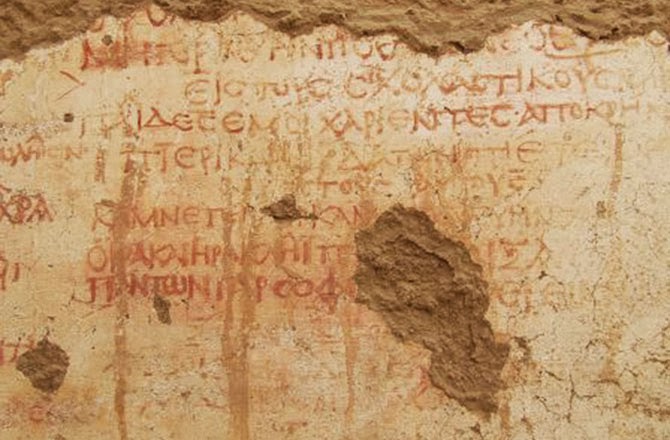KANAB, Kane County
– For 100 years, locals have believed Montezuma’s treasure lies at the end of a
tunnel below Three Lakes pond in Kanab, Utah. Now, filmmakers hope to discover
just what is there.
Producer Mike
Wiest along with landowner Lon Child and a crew of filmmakers are setting out
to tell the story of Three Lakes, Montezuma and the treasure hunters whose
attempts of recovering the gold have been foiled.
The pond that lies
along U.S. 89 is the site of Montezuma’s lost treasure that could be worth more
than $3 billion, according to local legend. Though some details vary, locals
believe Aztecs dug the Three Lakes pond to cover the treasure’s cavernous
hiding place in a water trap on the west side of the pond. Once dug, they could
divert a river to the pond, fill it up and walk away from an ordinary looking
pond with a valuable secret.
While it sounds
far-fetched, the story has circulated throughout Southern Utah since 1914, when
Freddy Crystal showed up with a map he claimed showed the treasure’s location.
It wasn’t until the 1920s, when he found a series of sealed tunnels in nearby
Johnson’s Canyon that people started believing him and joining his unsuccessful
hunt for the gold.
In 1989, Brandt
Child, a Kanab resident, bought the pond and surrounding area. He said he knew
the clues in Johnson Canyon were decoys, and the real treasure lay in a water
trap 36 feet below the pond’s waterline, indicated a symbol on the cliff above
the cave. Multiple efforts to dive into the caves were ended after divers said
they became disoriented and saw the ghosts of Aztec guardians, but they were
able to detect metal at the end of the tunnel.
Child’s next move
was to drain the pond. His plans were halted, however, when the U.S. Fish and
Wildlife Service put the amber snail on the endangered species list in 1992.
The small creature is so rare, its only known habitat is Three Lakes pond, and
each one killed can incur a $50,000 fine.
"I can't do
anything to my own property that might disturb those snails," Child told Deseret
News at the time. "It doesn't
look like anyone will get the gold."
The pond is
surrounded by mystery, which is what Jubal Productions hopes to uncover.
“No one’s gone
there yet. We’re only talking 140 feet away from shore,” Wiest said. “It’s so
close, yet no one’s gotten there and no one’s ever documented it.”
Wiest has been
interested in the property since he was 12 years old and his father mentioned
the pond was haunted. He didn’t learn more until a few years ago, when his
friends told him about Three Lakes’ history.
“We think more
importantly than finding if there’s in fact treasure there, it’s knowing why
it’s there, who put it there, who it was being hidden from and who was it
intended for,” Wiest said. “We’ve actually read several books on Montezuma and
Cortez and the conquering of Central America and the wars that were fought
there and the reasoning for the gold to be gathered and taken and hidden. It’s
been fascinating.”
Now, the
production team is raising funds to send remote operated vehicles, particularly
submarines carrying lights and cameras, into the cave. The ROVs are
well-situated to high water pressure and immune to human fears of the
supernatural that have impaired scuba divers in the past, Wiest said.
“The property has
such a rich legacy as far as the stories and hearsay goes, that I think anybody
at this point that knows of it and is certified to put on the scuba gear and go
down there, they’re already going to have that preconceived notion that people
have seen something down there,” he said. “It makes it that much easier for
them to interpret that in their mind or to see something. I think bringing in
the robots eliminates that unnecessary variable.”
The ROVs would
also be better able to avoid smashing any of the small snails.
They intend to use
their footage in a documentary about Montezuma’s treasure, its hiding place and
protectors. The crew believes there is something down there, and something is
protecting it, whether it’s supernatural or explained away by science.
Wiest said he
isn’t ready yet to discredit the supernatural as an explanation for the strange
occurrences surrounding the cave. He said he wants to go into the filming with
an open mind and is even ready to send in a scuba diving exorcist, if
necessary.
“Nothing is too
far fetched at this point only because, at this point, we can’t afford to
discredit anything,” Wiest said.
If the submarines
do find anything, Wiest said, they likely wouldn’t remove it from the cave. Lon
Child, one of Brandt Child's 10 children the land was parceled out to, has
expressed that it belongs down there.
“I’m most excited
to actually get a camera and film something that’s never been filmed ever in the
history of mankind, that’s never been seen and recorded., Wiest said. "I’m
thrilled to get some footage, as poor as the footage may be. I’m just thrilled
to get something. At the end of the day, we’re just storytellers. Hopefully
this will be a good story.”
Source: KSL
































